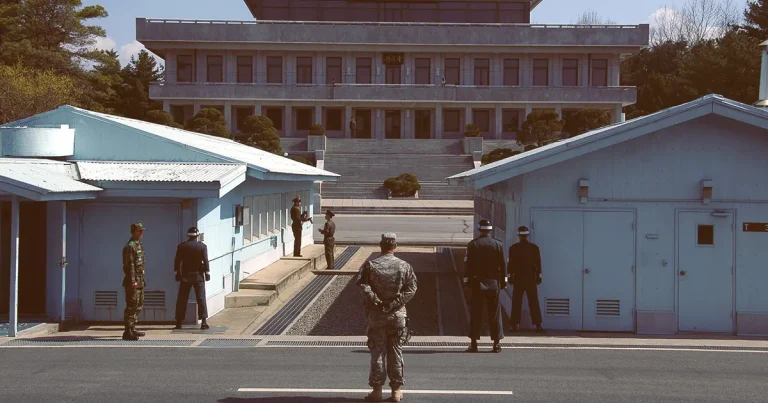15-6-2024 (SEOUL) In a move shrouded in mystery, North Korea has embarked on an intriguing construction project along the tense border separating the two Koreas. According to reports from the Yonhap News Agency, Pyongyang’s troops have been observed erecting walls and carving out roads within the demilitarised zone (DMZ), a 2-kilometre (1.2-mile) wide buffer that straddles the military demarcation line (MDL) dividing the peninsula.
The nature and scope of the construction remain unclear, with Yonhap citing an unnamed military source and refraining from providing details about the dimensions or specifications of the walls under construction. However, the report suggests that the activity has been taking place within sections of the DMZ’s northern periphery, in the area between the northernmost edge of the zone and the MDL itself.
This enigmatic development comes amidst heightened tensions between the two Koreas, fueled by a recent incident where South Korean troops fired warning shots after a group of North Korean soldiers, armed with picks and shovels, briefly trespassed across the MDL. Yonhap speculated that this trespass might be linked to the ongoing construction, though the motivations behind Pyongyang’s actions remain opaque.
Relations between the two nations have been strained in recent weeks, with North Korea launching trash-filled balloons across the border, prompting South Korea to retaliate by threatening to activate loudspeakers that broadcast propaganda into the DMZ. The situation underscores the fragile dynamics along the heavily militarized border, where hundreds of thousands of troops and a substantial portion of both countries’ firepower are stationed.
The construction project within the DMZ has raised eyebrows and sparked speculation about North Korea’s intentions. Some analysts suggest that the walls could be part of a broader strategy to fortify the border region, while others speculate that the construction might be linked to efforts to curb the flow of defectors fleeing the reclusive nation.
Regardless of the motivations, the presence of additional infrastructure along the DMZ is likely to exacerbate tensions and prompt concerns from the South Korean government. The zone, established in 1953 as part of the armistice agreement that halted the Korean War, has long been a flashpoint for military confrontations and diplomatic standoffs between the two adversaries.




